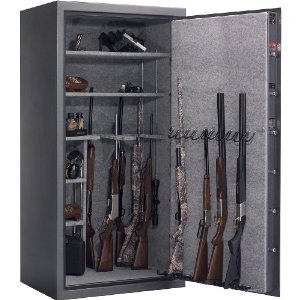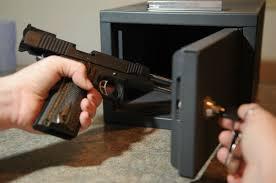In the aftermath of last week's Florida student massacre, there is no shortage of places to look for insight into possible remedies to America's agonizing and ongoing school-shooting epidemic. Policies, laws and personal behaviors nationwide – anything that might contribute to a solution – are being examined and re-examined, as they should.
And in that context, what should we make of the results of a new study, based on a fairly substantial online survey, focusing on kids with mental health issues, gun ownership and how those firearms are stored and secured in the home?
Skeptics might contend that because it's based on self-reported data the research might not produce incontrovertible results. But given the obvious need for answers to this continuing crisis, it would be hard to completely dismiss the value of the study's findings – shortcomings and all – which show that Americans could be doing more at home to minimize kids' access to firearms.
In a report published in the journal Pediatrics, titled "Firearm Storage in Homes With Children With Self-Harm Risk Factors," researchers concluded that a child's "history of depression, mental health conditions other than depression, or attention-deficit/hyperactivity disorder does not appear to appreciably influence caretaker decisions" when it comes to keeping guns at home and best safeguarding them in a recommended manner.
Nearly 4,000 adults completed a "nationally representative probability-based" online survey in 2015, which showed that among parents or caretakers who owned firearms and had children with no history of self-harm risk factors, 31.8% stored all their guns in the safest way possible: locked and unloaded.
Yet for adults whose children did have such a history, they were only slightly more likely to take the same safety precautions, with just 34.9% of adults reported that they did so.
The American Academy of Pediatrics recommends that households with firearms store them using the following criteria: (1) unloaded, (2) locked away, with (3) the ammunition locked elsewhere.
Nikolas Cruz, the accused 19-year-old gunman, lived in Broward County, Fl., where sheriff's deputies visited the family's home 39 times since 2010, according to CNN, for a variety of reasons, including for reports of a "mentally ill person." In addition, two days after the massacre on Valentine's Day that killed 17 people (14 students) at Marjory Stoneman Douglas High School, Cruz's 17-year-old brother was "involuntarily committed to a mental institution," NBC-affiliate WPTV reported.
 That said, at the time of the shooting, Cruz, after his mother had passed away months earlier, had been taken into another family's home, where he used a second key that was unbeknownst to the adults to access a rifle from locked storage. And if there was a history of mental illness, Cruz's caretakers may not have been aware of it. It is also not known whether Cruz's natural parents kept firearms at his first home. But this isn't about assigning blame; it's only to spotlight how firearm storage by adults affects kids' access to them.
That said, at the time of the shooting, Cruz, after his mother had passed away months earlier, had been taken into another family's home, where he used a second key that was unbeknownst to the adults to access a rifle from locked storage. And if there was a history of mental illness, Cruz's caretakers may not have been aware of it. It is also not known whether Cruz's natural parents kept firearms at his first home. But this isn't about assigning blame; it's only to spotlight how firearm storage by adults affects kids' access to them.
Roughly 42% of adults who self-reported that they were a "caregiver or healthcare decision-maker for a child under the age of 18" possessed a firearm at home. Meanwhile, researchers found for those adults caring for children with issues involving mental health, 44% kept firearms in the home. Active-duty military personnel were ineligible to take part in the survey.
But all in all, "[a]mong parents who own guns," the study reported, "only 1 in 3 stored all household firearms locked and unloaded, regardless of whether their child had or did not have a history" of the aforementioned self-harm risk factors.
Therefore, as this study reveals, it would seem that at the very least there's vast room for improvement in regards to how firearms are safely stored at home. And by extension, it would be hard to argue against increasing attention in this area, given the potential to save lives by reducing unsupervised access to firearms.




